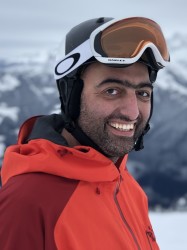BibTex format
@inproceedings{Hänsel:2018:10.1145/3173574.3173719,
author = {Hänsel, K and Poguntke, R and Haddadi, H and Alomainy, A and Schmidt, A},
doi = {10.1145/3173574.3173719},
publisher = {ACM},
title = {What to put on the user: Sensing technologies for studies and physiology aware systems},
url = {http://dx.doi.org/10.1145/3173574.3173719},
year = {2018}
}

